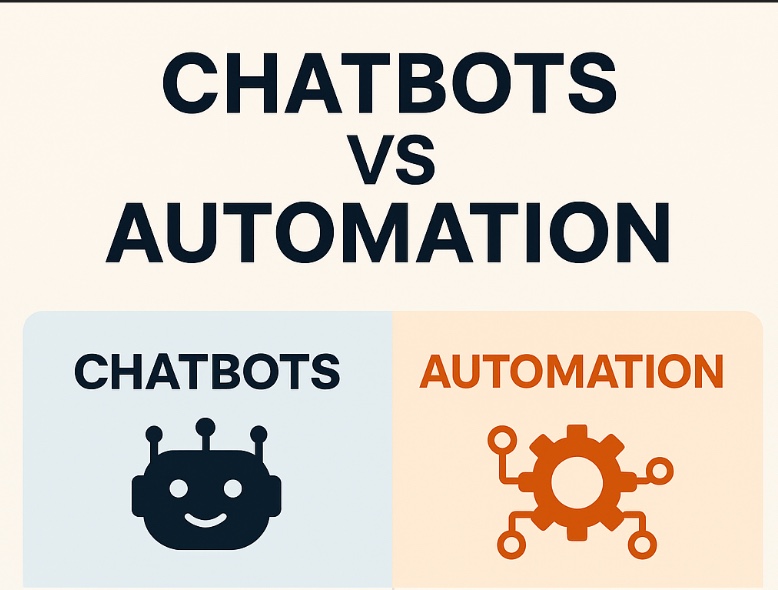Chatbots vs Automation: What’s the Real Difference?

🔍 Introduction
In today’s fast-paced digital world, businesses are constantly seeking ways to improve customer experience and streamline operations. Two terms often thrown around in this context are chatbots and automation. While they’re closely related and often work hand-in-hand, they serve different purposes. So, what exactly sets them apart?
🤖 What is a Chatbot?
A chatbot is an AI-powered tool that simulates human conversation through messaging platforms, websites, or mobile apps. Chatbots are commonly used for:
-
Answering FAQs
-
Guiding users through a process
-
Booking appointments
-
Handling basic customer support
There are two types:
-
Rule-based chatbots (follow pre-defined flows)
-
AI/ML-based chatbots (learn and adapt to user input)
They are your 24/7 customer-facing assistants, ensuring users receive instant responses.
⚙️ What is Automation?
Automation refers to the use of technology to perform tasks without human intervention. This can include:
-
Sending automated emails
-
Processing invoices
-
Triggering workflows based on user actions
-
Managing inventory
Automation is less about conversation and more about doing repetitive tasks more efficiently.
🧩 How Are They Different?
| Feature | Chatbots | Automation |
|---|---|---|
| Interaction Style | Conversational | Task-driven |
| User Interface | Text or voice-based chats | No direct user interface |
| Purpose | Customer engagement | Operational efficiency |
| Intelligence | May use AI/NLP | Rules and logic-based |
| Use Case Example | Answering customer queries | Automatically generating reports |
🤝 How They Work Together
Many modern businesses combine chatbots with automation for powerful results. For example, a chatbot may collect customer information, which then triggers an automated workflow to assign a support ticket or send a follow-up email.
🧠 Final Thoughts
While chatbots talk and automation acts, their true power lies in how they complement each other. Understanding the difference helps businesses design better workflows, enhance customer experience, and save valuable time.